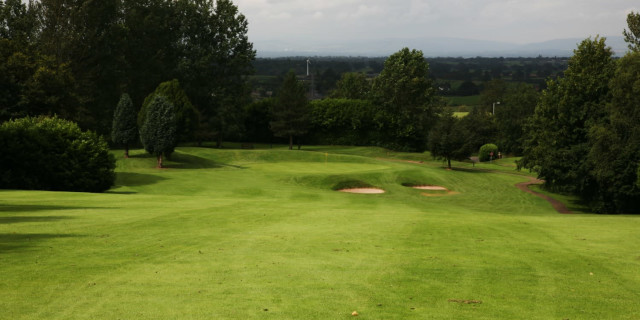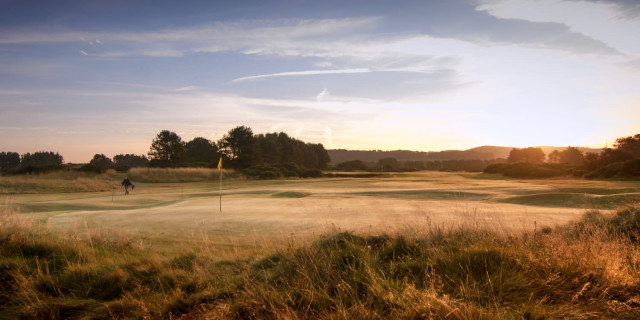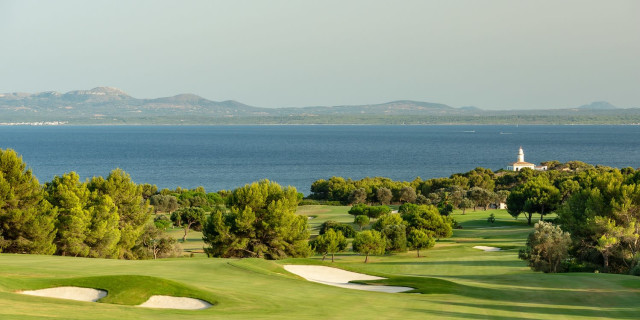
10 of the Best - Courses in Warwickshire
WARWICKSHIRE is a county of tremendous contrasts. Rugby and Nuneaton are busy, cosmopolitan towns with large populations, while Statford Upon Avon, the birthplace of William Shakespeare, is a picture-postcard destination that attracts hundreds of thousands of visitors from all around the world. Road signs at the county boundary describe Warwickshire as "Shakespeare's County". Places of interest include Warwick Castle, Coombe Country Park, the Grand Union Canal and Midland Air Museum. For many years it was also the centre of the British car industry.
With plenty of open countryside, it is little surprise that there are some fine golf courses in Warwickshire. Here, we look at 10 of the best.
The Belfry (Brabazon)
Par72, 7,253 yards, parkland
Green fee £160, winter £80
Designed by Dave Thomas and Peter Alliss, The Belfry is the home of the PGA and the Brabazon course is renowned as a Ryder Cup venue that features some classic risk and reward holes. It is a course where you find yourself walking in the footsteps of legends - Seve Ballesteros’ historic drive onto the 10th green, Sam Torrance’s famous putt that won the 1985 Ryder Cup match for Europe or Christie O’Connor Jr’s amazing two iron across the lake at the 18th. The fourth is a par four measuring 442 yards and is a frightening hole with water on the right, two deep fairway bunkers and a second shot to a green guarded by water and protected by two further bunkers. The 10th is probably the most famous par four in England - it measures 311 yards and can be reached with your Sunday best, but you need to be very accurate as the green is guarded by lots of trees, bunkers left and right and a canal to the left of the green. The 17th is one of two tough finishing holes, a par five measuring 564 yards It is a fierce dogleg to the right with bunkers waiting at the corner of the dogleg, further bunkers right and left that must be avoided with your second before an approach to a difficult green protected by more bunkers. The 18th is a breathtaking 473-yard par four that calls for a drive over the lake, but how much do you bite off? Bunkers lie in wait at the far side of the fairway, but even if you find the short grass your second shot has to be struck over another lake to a three-tier green with a bunker left and right.
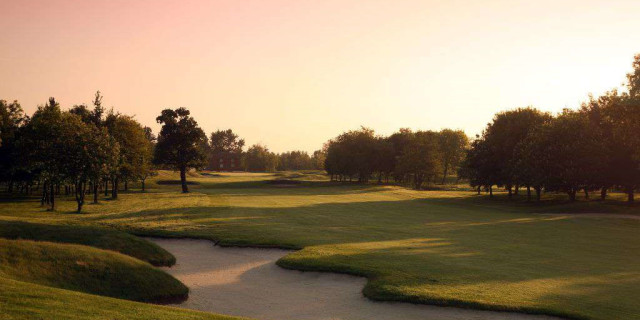
Forest of Arden Golf Club
Par 7,213 yards, parkland
Green fee £45
The Arden Course was designed by Donald Steel and was built on Lord Aylesford’s vast 10,000-acre estate in the early 1970s. This magnificent course has hosted seven English Opens and five British Masters. There are plenty of trees, but the fairways are pretty generous. The third hole is par five measuring 565 yards. A good drive is key, leaving a second shot that must avoid water on the left and bunkers to the right. The approach is to a two-tiered green. The sixth is a terrific par four that measures 466 yards. Bunkers on the right need to be missed. It is played to an elevated green, so make sure that you take one club more than you think when going for the putting surface. The 11th is 422 yards and the question you have to ask yourself is: can I carry the bunkers at 270 yards? If not, lay up before an approach to an undulating green. The 18th is the signature hole, a 211-yard par three. The elevated tee over water to another large undulating green is dramatic - deep bunkers protect the green.
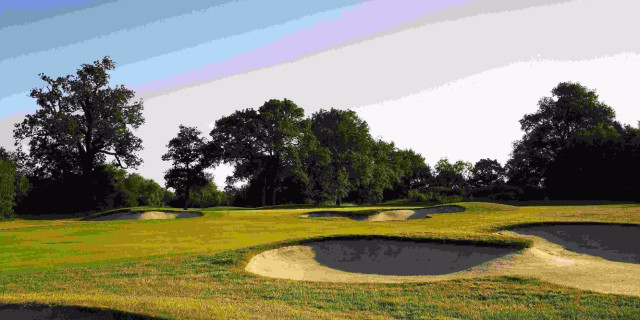
Copt Heath Golf Club
Par 71, 6,541 yards, parkland/heathland
Green fee £75
Designed by Harry Colt, Copt Heath requires accuracy from the tee and with approach shots as it is very well bunkered. It also boasts some of the best greens you will ever experience. At 445 yards and with a prevailing wind from the left a par is a good score on the opening hole. The hole is well bunkered on the right off the tee and trees on the left await those who play it too safe. While the green itself offers a fairly flat surface, it is well protected on both sides. The fifth may only measure 145 yards, but it asks plenty of questions. It is uphill, so you can't see the bottom of the flag, which is located on a huge green. You could hit what you think is the perfect shot and find yourself miles from the hole. Bunkers await anything to the right but the left hand greenside bunker is the one to avoid as it presents an extremely difficult recovery. The 13th is another short par three, this one running to 167 yards. Water comes into play short and to the right of the green, with sand on the left. The green slopes from front to back. The closing hole is only 322 yards and the temptation is to attempt to drive the green - the fairway is well bunkered and there are trees and bushes on the left. Best to go with a long iron or rescue club.
Coventry Golf Club
Par 73, 6,590 yards, parkland
Green fee £60
Coventry Golf Club was designed by Tom Vardon, with his famous brother Harry marking out the bunkers. It was formally opened in 1912 with Harry Vardon and James Braid playing an exhibition match. Over the years the course has undergone many changes and improvements. Set in 120 acres, all 18 holes are tree-lined, so don't miss the fairways. The second hole is a 404-yard par four. It is a right to left dogleg and demands a well placed tee shot. Ensure you pick the right club for your downhill approach, with out of bounds and a river directly behind the green. The ninth is only 327 yards but, again, placement is the key here, with a pot bunker waiting to catch your drive. Miss that and you have an approach shot to a green that is well protected by sand. The 14th is 402 yards and is a dogleg to the right, with an approach to another green surrounded by sand. The ideal drive is to the left of the fairway, opening up the narrow green. The 18th is 371 yards, with trees on both sides of the narrow fairway. Find the short grass and you face a second shot to a green with a rockery at the back and bunkers short.
Moor Hall Golf Club
Par 70, 6,290 yards, parkland
Green fee £50
Moor Hall was designed in 1932 and is one of the finest parkland layouts in Warwickshire. The course opens with a 529-yard par five. The drive The drive should favour the right half of the fairway as a tee shot hit down the left will almost certainly find sand. A drive up the right will also leave you with a flatter stance for your second shot. The cross bunker 85 yards from the green needs to be avoided, leaving a straightforward pitch to a large green. Two bunkers protect the front left and right of the green. The eighth is 364 yards and is a slight dogleg left. A large oak in the distance is the target. The approach is to a green that slopes from back to front, with cross bunkers waiting for a misthit second shot. The 14th is 436 yards and demands an accurate drive. The stream running across the fairway is 218 yards from the tee so many players will have to lay up short. Longer hitters can clear the stream but must position the drive on the left side of the fairway to allow a clear shot to the green. The approach is to a plateau green. The final hole is a 445-yard par four, which requires a drive to the right centre. A pulled or hooked drive will catch thick rough or be blocked out by two large oak trees. There are bunkers left and right of the green, and out of bounds running all the way down the left and behind the green.
Harborne Golf Club
Par 70, 6,210 yards, parkland
Green fee £45
Harborne Golf Club was established in 1893 and was designed by the legendary Harry Colt, who is responsible for some of the best courses in Britain. The opening hole measures 386 yards. It is a dog leg to the right and any drive struck to the right could find one of four bunkers. Long hitters can also easily run out of fairway when the ground is hard.The approach from a sloping fairway is to a well guarded putting surface. The seventh hole is the hardest on the course, on the card at least. It measures 378 yards with a fairway that slopes gently from right to left, and the ideal drive should be placed to the left. The approach is to a long, narrow green, with sand to the right and left. Often, the pin is unsighted. The 13th is a wonderful 398-yard par four with a blind drive over a marker post set at 200 yards. The green, at the end of a sloping valley, is raised. You need to ensure that your approach is hit high, otherwise it is unlikely to stay on the sloping green. The 18th is a 235-yard par three, played to an elevated green. The uphill approach means you won't get any roll on the ball, so make sure you have enough club, and in most cases that will mean a driver. The large green slopes from back to front.
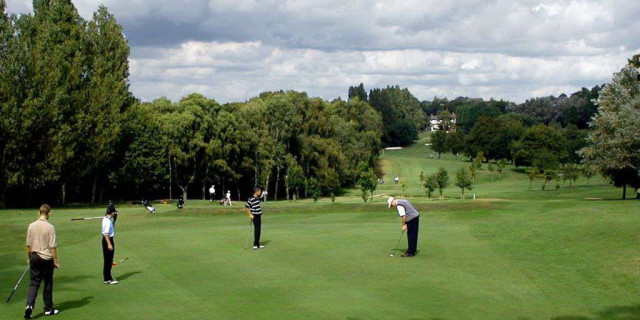
Sutton Coldfield Golf Club
Par 72, 6,548 yards, heathland
Green fee £45, winter £40
Sutton Coldfield is an excellent heathland course with plenty of trees lining the fairways. It was opened in 1889. The third hole is a cracking par four of 445 yards. It is a slight dogleg to the left that can tempt golfers to hit their drives too far left. The marker post offers the best line. The green dates back to the 1890s - be careful with your second as if you come up short your ball will bounce to the right. Unusually, the fifth, sixth and seventh holes are all par fives. The fifth is the shortest at 479 yards, but is probably the best - ?it plays towards Rowton Hill and is generally against the wind with a left to right camber on the fairway. There are trees left and right and the green is protected by two bunkers. The 12th is a difficult 422-yard par four, with trees running running down the right side and a couple of copses on the left. A stream bisects the fairway, which narrows after 220 yards. The green is undulating and difficult to read. The 18th is another testing par four, this time of 410 yards. Another stream runs across the fairway, waiting to catch any poorly-struck drive. The approach is to a raised green, so make sure you take more club than you think you might require.
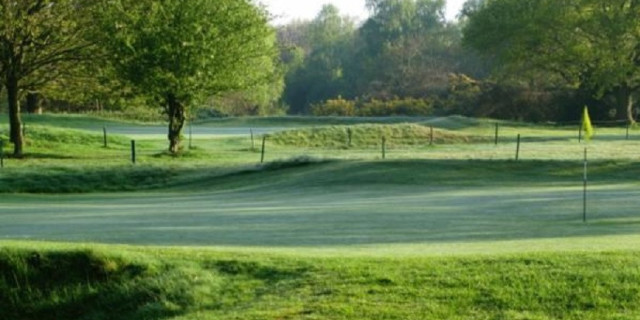
Ladbrook Park Golf Club
Par 71, 6,502 yards, parkland
Green fee £50, winter £25
Designed by Harry Colt, more than 100 years ago, Ladbrook Park is a fine parkland course that incorporates a series of streams that weave their way through the holes, criss-crossing fairways, protecting greens and feeding the numerous ponds. Water comes into play on 11 holes, so you will do well to stay dry. The first is a 485-yard par five played through an avenue of trees. You play down towards the stream then climb to the green. There is out of bounds to the right of a green that is protected by sand. The seventh is only 476 yards, but it is fraught with danger. There is out of bound son the right and a stream crosses the fairway in the ideal landing area. The approach is between two oak trees, with a deep pit to the right of the green. The 14th is a 354-yard par four. The first challenge is to clear the stream running across the fairway. There is also a pond to the left and another that cuts in to the right side of the green, which is also surrounded by bunkers. The 413-yard 18th is a good finishing hole. It is straight, with trees on either side of the fairway, but the real challenge comes with the approach, with out of bounds running all the way down the right.
Olton Golf Club
Par 70, 6,258 yards, parkland
Green fee £50
Olton is yet another Harry Colt course, opened in 1893, and is a true parkland test, with plenty of trees to be avoided. The fifth is a 200-yard par three from the back tee, with trees to the right and a deep bunker guarding the right-hand side. It has a large green so if the pin is at the back make sure you take enough club. The ninth measures just 373 yards, but it is all about position from the tee. Aim at the marker post and you will be left with a straight approach to a green that sits within an avenue of trees. There are bunkers left and right and a huge cross bunker short of the green - avoid it at all costs. The 12th is another short par four, this time of 308 yards. Take a fairway wood or long iron to ensure position from the tee. Avoid the large fairway bunker and you will be left with a short iron to a well guarded green that slopes from right to left. The 18th is a classic finishing hole, a par five measuring 522 yards. An accurate drive is essential, leaving a second shot that should finish on top of a bank about 100 yards from the green. Ensure you don't go too far and leave yourself with a downhill pitch.
Nuneaton Golf Club
Par 71, 6,452 yards, parkland
Green fee £35
Nuneaton started life as a nine-hole course and was extended to 18 holes in 1964. The first hole is 395 yards, with bunkers right and left. It plays downhill and the drive should be hit to the right side of the fairway. The green slopes uphill from front to back with a bunker to the left. The hole is surrounded by trees. There are no bunkers on the 377-yard par four eighth, but trees guard the fairway and the ideal drive is to the left to avoid the copse of trees on the right. Your second shot needs to clear a large pond in order to find the putting surface. The 13th, at 413 yards, is a great par four, with trees encroaching on both sides, but especially from the right. Hit your drive to the left centre of the fairway to avoid a bunker on the right. The challenge with the second shot is to avoid the pond on the right and bunker on the left. The 17th is only 159 yards but is a terrific par three. A deep bunker to the right must be avoided. There is another to the left, and the green is surrounded by trees.
Related Content: warwickshire


